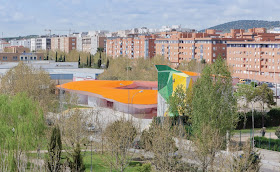My father sent me the press blurb promoting Martin Filler's latest book, Makers of Modern Architecture, Volume II. In the first paragraph I am quoted as follows:
"...longtime New York Review of Books contributor Martin Fille—“probably the best all-round architecture critic currently working in the United States,” according to the architectural journalist David Cohn—..."
And I thought, "How generous of me." Think of that, they had to go to all the trouble to look me up to find someone in the same field willing to say a nice thing about a fellow slogger.
Then I looked up where the quote came from, a blog entry dated April 14, 2012, in which I managed to follow that praise with some pretty nasty putdowns:
"The lengthy article, reviewing the recent show on Koolhaas at the Barbican Center in London, includes interesting tidbits about Koolhaas' background, mentions his new book on Japanese metabolism, and offers an overview of his career. But the limitations of its North American perspective are finally disappointing."
"Typically, Filler is unable to appreciate Koolhaas' fascination for Wallace K. Harrison, Nelson Rockefeller's architect -- the most genuinely American cultural phenomena tend to be under-appreciated at home. He offers the usual politically-correct tisk-tisk-tisking about Koolhaas' work for the Chinese "dictatorship" (precisely the kind of lock-step intoning of American foreign-policy positions in the supposedly "liberal" American press that makes one wonder what they mean by "freedom of thought"). And of course Filler doesn't even register Koolhaas' enthusiasm for East Berlin prefab apartment slabs and other architecture of the Soviet era. (And this just when similar US projects like Pruit-Igoe are getting a second look by a new generation)."
So if he's so good and yet so bad, where does that leave all the other American writers? And where does that leave me in Spain? Sitting pretty, according to me. So much for my big generous spirit.
Know any drab Stalinist housing block I can move into for a period of atonement?
Pictured above:
Housing in Chisinau, Moldova
From Martin's Big Tour of Eurasia































